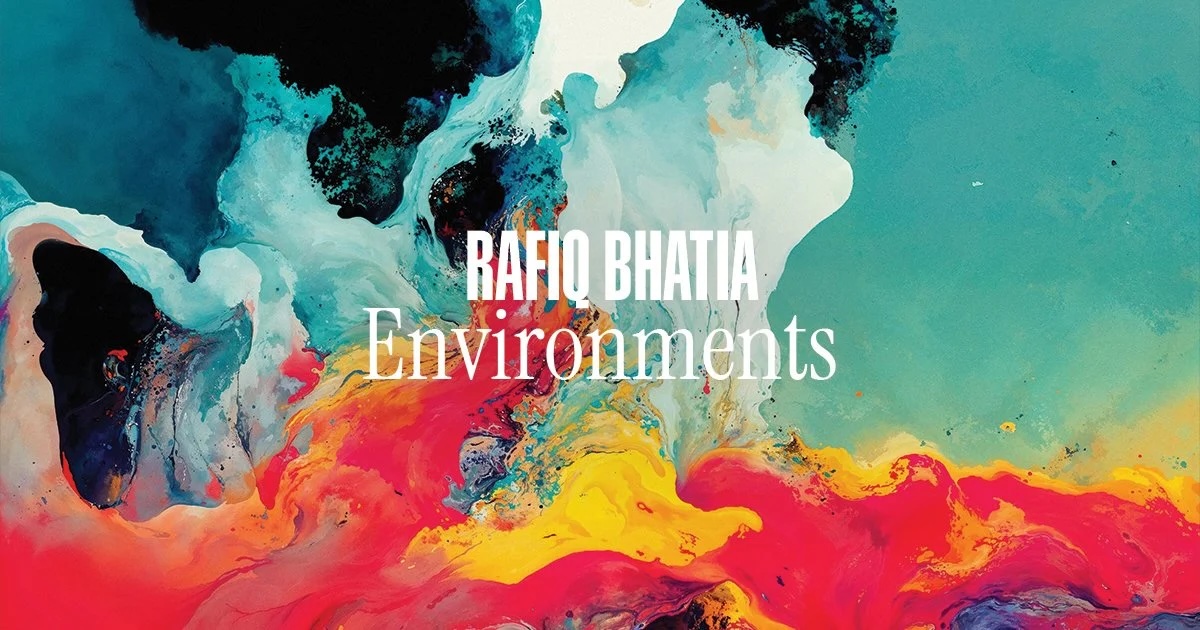
From 1969 to 1979, a series of field recordings appeared on the Atlantic label under the title Environments. Song titles included “The Psychologically Ultimate Seashore” and “Dawn in New Hope, Pennsylvania” (which would have made a dynamite title for a Ween album), presenting painstakingly recorded sonic representations of places and the sound-worlds they produce. The marketing capitalized on the hippie counterculture, stressing both the transportive and relaxing properties of the sounds. “Better than booze, safer than pot,” as a quote from Life magazine put it. Son Lux guitarist Rafiq Bhatia titled his new album Environments (September 12), and filled it with song titles that could come from its namesake: “Aviary I | Sunrise,” “Rain on the Canopy | Melting Sky,” “Clearing, Crickets.” But unlike their ancestors, these tracks aren’t designed to soothe, and there’s nothing natural about them.
The album begins, after a spate of faint feedback that gradually coheres into mournful consonance, with the chirp and chatter of birds. But “Aviary I | Sunrise” doesn’t contain any samples—the whistles and calls emanate from Bhatia’s guitar, aided by pedals and processing. Throughout the album, Bhatia maintains a porous tension between textural noise and lambent melody, his guitar sliding between pitch-shifted scrapes, floating, fragmentary phrases, foghorn drones, and fractal glimmers. Drummer Ian Chang, a Son Lux bandmate, usually helps with the noise, deploying rhythms that mimic the unpredictable impacts and sudden shifts of seismic events and meteorological distress. Chang helps keep the eerie, rumbling “Volcano ∆,” at a boil (it never explodes), while his gigantic synthetic concussions give “The Sky Breaks Open” an apocalyptic swing. Trumpeter Riley Mulherkar often helps with the melody, his bruised, tallowy tone adding an acrid sweetness to tracks like the elegiac “Clearing, Crickets.” (It’s a sure bet that the insectile susurration that lends the track a nocturnal feel comes from Bhatia’s guitar, not from nature.)
Though every track on Environments has the open-ended flow of almost complete improvisation (the 11-minute “Aviary I | Sunrise” was captured in one take), Bhatia has clearly put his sound design knowledge to good use (Son Lux received an Oscar nod for their score for Everything Everywhere All at Once), giving his work a self-contained logic that belies its spontaneous origins. “Rain on the Canopy | Melting Sky” segues from brittle droplets to squeaky flitter to starlit reverb as seamlessly as night sinking into the horizon. Bhatia’s palette can approach the cosmic—the drone shower and molten tones at the end of “Melting Sky” suggests exactly such a sidereal phenomenon. But he might pay more attention to the little things, like the way his closely picked high strings evoke the play of light on (or in) a fluid surface in “Glimmers in the Ocean Deep,” or the evolution of the rushing dissonance and conch-shell moans that open “At Midnight on a Black Sand Beach, the Raging Tides Begin to Speak.” Environments is a work of both big physical forces and minute cellular interactions.The original Environments promised to create an oasis of nature within the modern home. Bhatia’s Environments conjures its own worlds and fills them with artificial beauty, before polluting them, breaking them down, and building them back up. If Bhatia’s sound worlds are simulacra, they tell us something about the real world we’re working so hard to replace.

Leave a comment